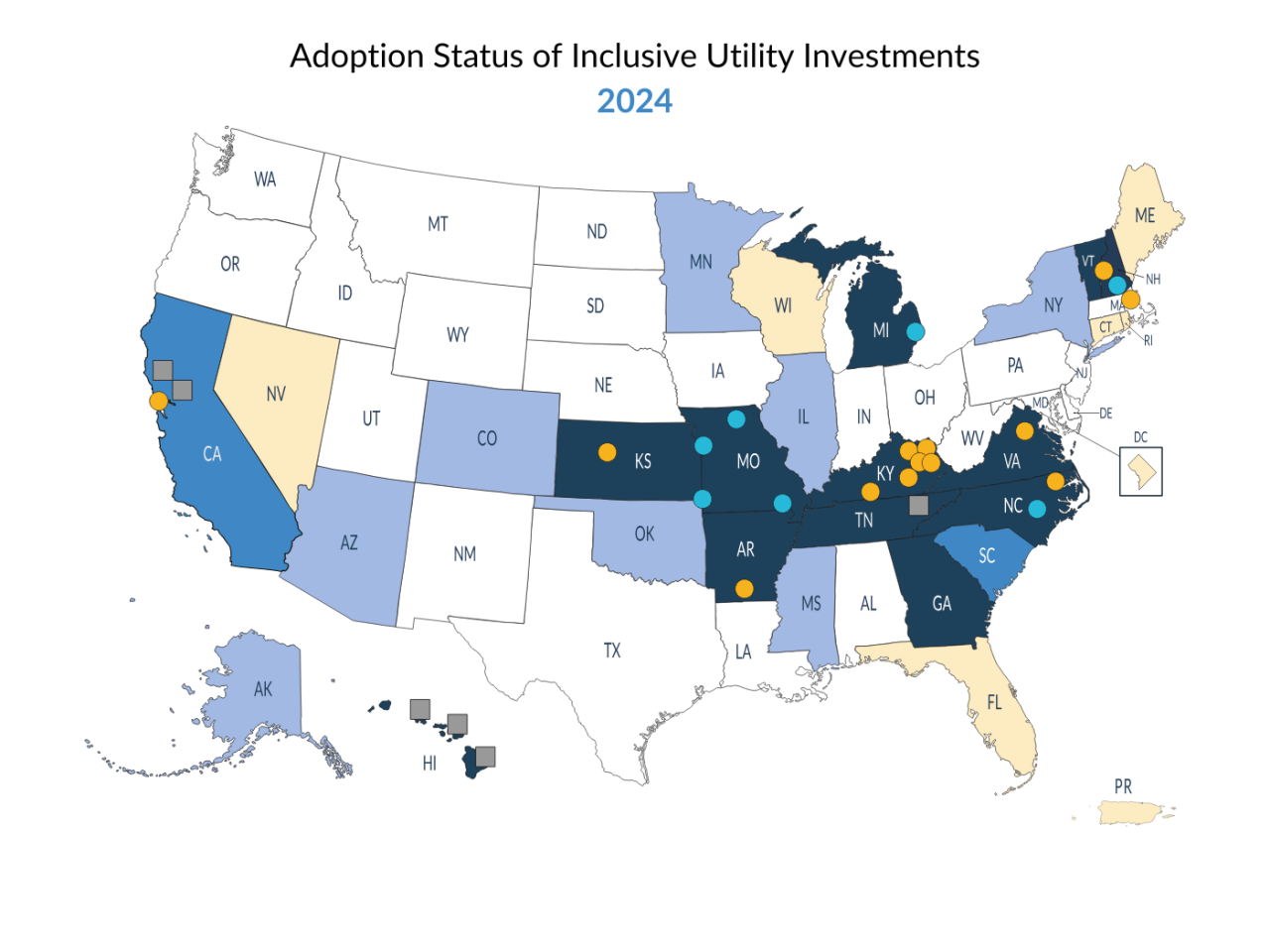Power to the People: Inclusive Utility Investments in the U.S.
The theory is well known: we must, urgently, reduce our reliance on fossil fuels. A transition to renewable energy and a reduction in overall consumption are essential pieces of this shift. And yet, many barriers persist. One is financial (and social): renewable energy systems are capital-intensive, and upfront investment remains a significant exclusion factor. Across urban and rural areas, studies have documented a “clean energy divide,” with wealthier, whiter communities more likely to access the benefits of renewables, while marginalized groups face exclusion or even displacement.
In the United States, this divide is shaped by factors such as credit scores, homeownership, and debt—criteria that disproportionately exclude financially low-income communities and people of color. Add to that a long history of energy infrastructure harming marginalized neighborhoods. The current U.S. administration isn’t helping in this equation either… Clean Energy Works, a Washington-based nonprofit, is tackling this challenge by acting as a convener, technical advisor, and knowledge hub of what it calls inclusive utility investments. The basis is a patented financial mechanism from 1999 known as Pay As You Save® (PAYS®), which allows utility providers – think electricity, natural gas, etc – to cover the upfront costs of energy upgrades (such as solar panels, building electrification, or vehicle fleet transformation) and recover those costs over time through the customer’s utility bill (which still remains lower than the savings generated by the investments). Because the tariff is tied to the meter rather than the individual, this scheme does not depend on homeownership, credit history, or personal debt, making it far more accessible to renters and low-income households. In addition to conducting research, advising on program design, and developing open-source toolkits and policy guides around this model, another added value of Clean Energy Works is bringing together and supporting utilities, public institutions, and communities in tailoring it to implement just and scalable solutions in new contexts. Their programs span energy efficiency, on-site solar generation, energy storage, and electric mobility. The organization offered technical assistance, for example, to a coalition of diverse stakeholders in North Carolina that (successfully) advocated for Duke Energy, one of the largest electric utilities in the U.S., to launch an inclusive utility investment program in early 2024. This initiative builds on the success of the tariff-based model pioneered by Roanoke Cooperative which – accompanied by Clean Energy Works as well – was the first in the state to implement inclusive utility investments.
As we have seen, the idea of using future energy savings to finance upgrades is not entirely ‘new’. Similar approaches have been explored, for example, through community housing in Ireland or complementary currency systems that reward energy efficiency (and sometimes, sufficiency). Let’s continue exploring how this idea can help make the energy transition a reality – applied at the utility scale as well as in different sectors and/or cultural, legal, and social contexts.
Image credit: Clean Energy Works

